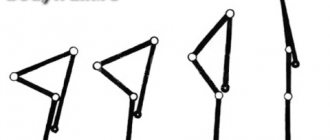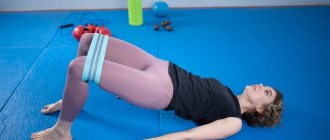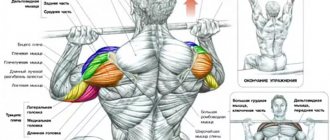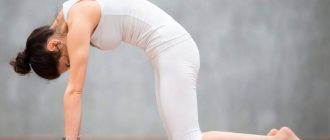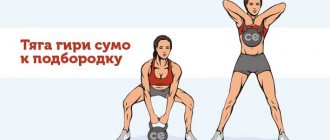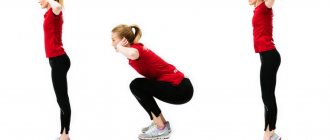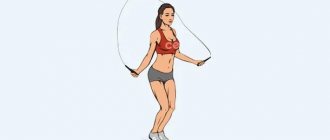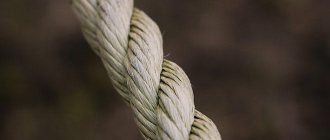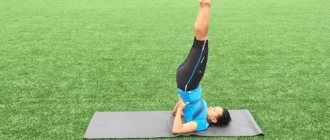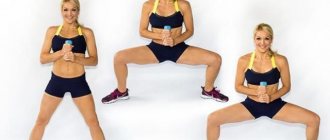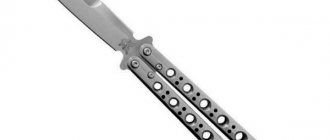The half-squat, or half-amplitude squat, is an exercise that falls into the category of auxiliary. What is noteworthy is that many athletes categorically do not perceive it, calling it the offensive word “under-squats.” And completely in vain.
Despite its dubious reputation, the partial squat is actively used in weightlifting and powerlifting as an additional targeted exercise. It allows the athlete to target the upper phase of squats. Promotes better preparation of muscle tissue and ligaments for high loads, trains the quadriceps. Which in turn makes it possible to work with much larger weights in the future.
Features of half squats
The half-amplitude squat is not used as a permanent training element. Since the technique of its implementation is not the safest and is inferior to other options in terms of effectiveness.
However, weightlifters often use this special exercise as a preparatory exercise. For them, this is a kind of method that allows them to accelerate in the moving phase of the push, accelerate and move the weight from a dead point.
Powerlifters also include half squats in their training programs. With their help, they manage to overcome the barrier (more psychological) to the increased load.
But in ordinary fitness or bodybuilding, a half-amplitude squat is quite a rare occurrence. As a rule, it is used only when an athlete faces problems with increasing strength indicators (progress stops, a stagnation phase begins). By the way, the ability of this exercise to quickly bring the athlete out of this state is its main advantage.
If the training program involves regularly lifting heavy weights aimed at building muscle mass, at a certain period the athlete will inevitably face a pressing problem - stagnation. The muscles get used to the given load (lifted weight) and stop growing. At this point, it would be appropriate to supplement your exercises with a half squat. This will not only diversify your training, but will also force sleeping muscles to awaken (start to grow again).
It works roughly like this. A half-amplitude squat sharply loads the muscles (more than usual), as it allows the athlete to lift more weight. His body, being in a state of stress because of this, receives a signal that next time it may not be able to cope with the increasing load. As a result, an intensive increase in muscle mass in the legs, back, and torso begins. Thus, the half squat is rightfully considered an effective way to get out of stagnation.
Please note that the full-range squat is not a simplified variation of the classic squat. Weightlifters perform it at an explosive, very intense pace. For powerlifters, this is a more dynamic version of the full squat, the technique of which does not allow for pauses at the top and bottom of the movement.
This exercise is performed with serious weights. Pulling light weights in a half squat is simply not practical. With a moderate load, it is much more practical and effective to do full squats. Accordingly, the risk of injury increases significantly. In addition, if we look at the anatomy, it is easy to understand that our knee joints, in principle, are not designed to work in such an amplitude, which is why the anterior cruciate ligament of the knee receives an excessively large load.
Since we touched on anatomy, it is worth noting one more nuance. Bodybuilders incorporate the half squat into their training regimens to target the quadriceps. But at the same time, they perform this exercise with their feet toes forward. Which, again, is not very consistent with the structural features of the human body.
Do deep squats help pump up muscles better?
It is difficult to say which squat depth puts more stress on the muscles of the hips and buttocks, since science does not provide an exact answer.
In twoMuscle Activation Differences Between Partial and Full Back Squat Exercise With External Load Equated. , Muscle Activation Differences between Three Different Knee Joint‑Angle Positions during a Maximal Isometric Back Squat Exercise. Studies have found that a partial squat puts more strain on the buttocks, hamstrings, and calves than a deep squat. In anotherA Comparison of Gluteus Maximus, Biceps Femoris, and Vastus Lateralis Electromyography Amplitude in the Parallel, Full, and Front Squat Variations in Resistance‑Trained Females. did not see any difference between muscle activation in squats with different depths.
Another study, The effect of back squat depth on the EMG activity of 4 superficial hip and thigh muscles, showed that when you squat deeply, your gluteal muscles engage more during the rise than when you perform the exercise until your thighs are parallel to the floor or higher.
At the same time, deep squats really help. Effect of range of motion in heavy load squatting on muscle and tendon adaptations. Increase the strength and thickness of the muscles on the front of the thigh faster than a half-range exercise.
There are two possible explanations for this:
- Muscles are under load longer. More mechanical tension, stimulus for growth, strength and hypertrophy.
- When a muscle is loaded in a stretched position, Neuromuscular adaptations associated with knee joint angle‑specific force change increase. mechanical stress and growth. The deeper you squat, the more the medial and lateral heads of the quadriceps and gluteal muscles will stretch, which means training will be more effective and muscle growth will be faster.
However, this does not mean that every person needs to squat as deep as their knees bend. The ideal depth of a squat is different for everyone, and it depends primarily on the ability to maintain the correct technique.
What muscles are involved when performing a half squat?
The entire burden in this case falls on:
- calf muscles;
- quadriceps;
- as well as the longissimus dorsi muscle.
In the upper phase of the movement in a half squat with a barbell, the quadriceps and adductor muscles of the thigh are used to a greater extent. Also, the extensor (longissimus) of the back is actively working. The remaining muscle groups act as stabilizers. However, the main function of a half-amplitude squat is considered not to be muscle training, but to train ligaments and joints. Since this exercise is performed with serious weights (on average, athletes take 20-30% more weight compared to classic squats), you must first warm up thoroughly. This is the only way to minimize the likelihood of injury to the lower back and knees.
As we have already found out, during half-squats, the knee joints and lower back are mostly loaded. Therefore, it would be useful to use special elastic bandages during training (not to be confused with sports ones, which are used by powerlifters in competitions). Also, you should make sure you have a safety belt.
Muscle atlas
Deep squats are called when the pelvis and hips drop below the knees. At the same time, the following increases: the working muscle in length, the amplitude of lowering and lifting, and the load. The number of muscles worked is much greater than in parallel squats, and the complexity of the exercise is much higher. This requires serious physical training related to the flexibility of the hip joint, ankle and coordination of movements.
So, what muscles work when performing this exercise:
- VMO is the quadriceps muscle, which is in the shape of a drop located directly above the knee, crosses it and performs the function of stabilizing it;
- hamstrings;
- broad muscles of the thighs;
- gluteal;
- back and lower back - partially;
- if with weights - shoulder girdle and arms.
We can conclude that for women, deep squats are an ideal exercise for the buttocks, which reach maximum tension at the lowest point. And it is useful for men to perform them to pump up the famous VMO and quadriceps muscles.
Expert opinion. Sports scientist Andrew Fry believes that constantly doing partial squats eventually weakens proprioception and flexibility.
Advantages and disadvantages of the half squat
pros
First of all, let's look at the benefits of this exercise:
- Performing a half-amplitude squat helps prepare the muscles, ligaments and even the endocrine system for increasing working weights. This also includes the ability to more easily and quickly overcome the psychological barrier to increased stress.
- Work in the upper phase of the squat. Often it is she who lags behind in athletes. This is especially true for those who use inertia when lowering the barbell down.
- The half squat is often used to place more emphasis on the quadriceps muscle. It is not performed constantly, but only in combination with extension of the knee joints in the simulator.
- It allows you to thoroughly strengthen the back muscles in static conditions. By holding a lot of weight on the shoulders.
- Helps to practice core stabilization.
- Great for training the “knee insertion” skill of the deadlift.
In addition, it is the half squat that helps many athletes cope with the state of stagnation (plateau effect). When muscle tissue stops growing, progress from training is no longer observed.
And yet, it is very important to understand that not all people, due to their own individual physique, are able to do regular squats. For some, performing a full squat is beyond their ability. They simply cannot drop below hip parallel to the floor without putting compression stress on the lower back. The only possible option for them is a half squat.
Minuses
While listing the benefits of the exercise, one cannot help but talk about its disadvantages. These include the following points:
- Half squats place excessive stress on the cruciate ligament of the knee, which causes pain and can cause inflammation.
- Doing this exercise can cause a lower back injury. When an athlete has problems with the spine (hyperlordosis or protrusion), but he ignores the need to abandon training with heavy weights.
- Not everyone manages to develop sufficient coordination through half-amplitude squats. Many people end up having to master the full squat technique.
Do deep squats damage cartilage?
It is logical to assume that excessive pressure on the knee joint wears down the meniscus and cartilage behind the kneecap. However, elite weightlifters and powerlifters are no more likely to suffer from osteoarthritis. Degenerative joint disease in weight‑lifters. Fact or fiction? than non-sports people. But they train every day and lift a barbell many times their body weight.
Whether your cartilage will be damaged depends on many factors: genetics, quality of nutrition, quantity and type of physical activity.
Exercises performed through the full range of motion, that is, when you bend your limbs as far as possible, conversely help protect joints, and strength training has been shown to be The Effect of High Resistance Weight Training on Reported Pain in Older Adults even with osteoarthritis. They help strengthen muscles, reduce pain and restore mobility.
So, a deep squat does not have a negative effect on the knee joints. But does it make sense to squat like this, unless, of course, you do weightlifting?
Half squats and bodybuilding
Athletes of this sports discipline also include half-amplitude squats in their training program. With this exercise they work the quadriceps muscle (quadriceps). However, a half-squat in their case is not the best solution. Stretching of muscle tissue occurs much more intensely when doing full squats or performing exercises with a barbell that involve adding pauses while standing up.
Half squats are most often used when you need to eliminate the work of the buttocks, shifting the emphasis to the quadriceps muscles. The exercise is definitely not suitable for pumping up all groups. But it is great for bringing the body out of a state of stagnation (when muscle growth stops). The introduction of half-squats into the training regimen often gives a kind of impetus, and the muscles begin to actively develop again.
Thus, it is advisable to perform a half-amplitude squat if the athlete is not technically able to do classic squats correctly. Typically due to limited physical capabilities. We have already said above that individual body features must be taken into account.
In general, there is no great need for performing half squats for athletes training to build muscle mass. But including them in your lesson plan for variety is not a bad idea.
How is this exercise useful?
Coach Anna says that squats are very beneficial for the body. They use several muscle groups, thanks to which the body develops harmoniously. Joints and knee tendons are strengthened, coordination and posture are improved.
Squats are also safe for children, but in order for the child to immediately learn the correct technique, he must be supervised by a trainer.
5 effective exercises to tone your thighs
So, when you squat, you load your entire body. The work of the muscles will depend on the position of the back, legs and feet. An article in Flex magazine in 2011 reported that scientists in Denmark conducted a study that showed a link between leg size and heart health. Over 10 years, about 3,000 people were tested. The researchers concluded that high muscle volume protects against the development of cardiovascular disease and reduces overall mortality.
Photo: unsplash.com/@chrisjoelcampbell
Strong buttocks are not only beautiful, but also useful! Weak muscles increase the risk of problems in the lower back; they and the abs are responsible for the vertical position of the spine. By squatting, you will improve your reproductive functions as a bonus.
Anna Smirnova
PoleSport and aerial gymnastics coach
I squat daily with my own weight: in the morning during exercise and before training as a warm-up. For me, as an aerial artist, strong abs are very important, and squats help me pump them up.
You can exercise with your own weight. The buttocks will be 100% toned, but for voluminous shapes you will need additional weights. If you have contraindications, use the leg press, this will take the load off your spine.
4 rules of yoga for a healthy body
What is important to know before training?
- Make sure your back and legs are healthy. They receive a lot of stress during squats, so choose an appropriate weight or exercise with your own weight.
- Choose comfortable clothes and shoes. Nothing should stop you from moving.
- Do a 10-minute joint warm-up and warm up your muscles. This way you will protect yourself from possible injuries and increase the effectiveness of your training.
- Carefully study the technique of performing each movement or ask a trainer for help.
- Watch your back while doing the exercise. You can use an athletic belt. It helps to fix the spine in an upright position and avoid back injuries.
Photo: istockphoto.com
Technique for performing the half squat exercise
Please note that beginners should perform half-amplitude squats under the guidance of a trainer. At the very least, thoroughly master the technique under the supervision of a professional. Unless otherwise provided by a special program, it is necessary to squat exclusively with an empty bar (applies, again, to beginners).
The classic squat and half-squat require almost the same execution technique. The only difference is the level to which you need to lower the pelvis. And so, let's get started:
- To begin, install the barbell on a rack, equipping it with the required weight.
- Step under the apparatus so that the bar is in the middle of the trapezius muscles (slightly below the neck area). Watch your back position. It should be straight, with a slight arch in the lower back. Place your feet shoulder-width apart, look straight ahead.
- By straightening your knees, carefully remove the apparatus from the frame and step back 2-3 steps.
- Now carefully squat down, spreading your knees to the sides. The thighs should not be parallel to the floor surface. Remember that you are doing a half squat. Lower your body slightly downward.
- Next, straining your muscles to the limit, rise from the bottom position. Perform the required number of repetitions (3-6 repetitions for 3 sets).
Remember, you must have full control of the position of your legs and body during the exercise. The knees should be in the plane of the toes, the back should be straight, and there should be a slight arch in the lower back. The main emphasis is placed on the heel and middle of the foot.
Many novice athletes mistakenly believe that you should not fully straighten your knees when doing a half-amplitude squat. A fundamentally wrong opinion. The half-squat technique copies the upper part of the classic squat, so there is no need to try to keep the knee joints slightly bent.
In conclusion, it should be recalled once again that half squats can be quite an effective means of training the legs if this exercise is used as intended. It is worth including it in the training program for athletes who are aimed at developing muscle strength (weightlifters, powerlifters). And also for those who, due to physiological characteristics, are not able to cope with the technique of regular full squats.
Since performing the exercise involves the use of large weights, it is important to realize responsibility for your own health and take the process as seriously as possible.
And now we offer you several thematic videos to watch. Using a clear example, it will be much easier to master the intricacies of performance techniques:
Static half squat
Half squat against the wall
Leg exercise. Half squats with barbell
Leg training. Half squat with barbell
Partial or full range of motion for muscle growth
Read also
- Squats with a barbell - technique of correct execution, types of squats
- How to squat correctly - technique of doing squats, benefits and contraindications, main mistakes. Set of squats for strong legs
- A set of leg exercises without the use of additional equipment
- Exercises for losing weight in legs: a complex for beginners
- Exercises for the inner thigh
- Training the front surface of the thigh: why is it important and what exercises to choose?
- Comprehensive bodyweight leg workout: developing mobility, strength and endurance at the same time
- Exercises for the feet: importance and features of training

